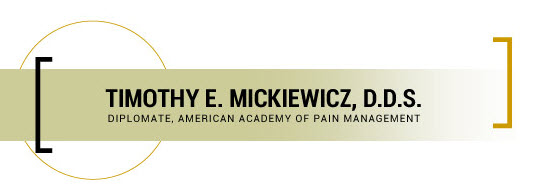
Jaw pain is a common issues. Sometimes, the pain is related to temporomandibular joint disorder (TMD). However, it can be difficult to know the cause without the opinion of a professional dentist.
The U.S. Department of Health and Human Services estimates that ten million people are affected by TMJ disorder. For that reason, it is important for anyone experiencing these jaw pain symptoms to visit the dentist:
- Chronic, recurring headaches
- Radiating pain in the face, jaw, or neck
- Constant ringing in the ears
- Jaw muscle stiffness
- Limited movement in the jaw
- Locking of the jaw
- Clicking, popping, or grating when talking or chewing
- Dental misalignment
- Numbness or tingling in the extremities
What are the temporomandibular joints?
The temporomandibular joints are two of the most complex joints in the body. To locate your TMJs, place your fingers right in front of your ears and open your mouth. You should feel the joints protrude.
This is the place where the lower jaw, also called the mandible, connects to the temporal bone which extends across both sides of your head. There are small, soft discs inside these joints that absorb shocks to the TMJ from chewing and other movements. These complex joints allow the jaw to move smoothly up and down and side to side. Or, at least, they should.
Clicking noises when opening and closing your mouth are nothing to be worried about. This is common and only concerning when combined with jaw pain or limited jaw movement.
What causes TMD?
While trauma may play a role in the development of temporomandibular joint disorder, other causes are unclear. Some scientists and health care professionals believe these factors may contribute to TMD development:
- Arthritis
- Bruxism
- Erosion of the joint
- Birth defects
- Poor posture
- Prolonged stress
- The use of braces
Who diagnoses TMJ disorder?
Jaw pain and other TMJ problems should be checked out by a dentist, preferably one with experience and success in diagnosing and treating jaw issues.
In his 30 years of practicing dentistry, our dentist Dr. Timothy Mickiewicz, has created many innovative procedures for complex dental problems related to jaw pain. Because of his accomplishments, he has become known as the “Face of TMJ Therapy”.
The TMJs are such a complex part of the body that choosing a dentist who specializes in TMJ therapy is essential to the success of your treatment.
How is it diagnosed?
Since the causes of TMD are unknown, dentists typically listen to the patient’s symptoms, examine the jaw, neck, face, and head, review the patient’s medical history, and use different imaging tests such as an x-ray, CT scan, and MRI.
The dentist often works with an ENT specialist or general practitioner to rule out any other medical conditions.
What treatments are available?
Once diagnosed, the dentist will provide the patient with a conservative, customized treatment. This treatment plan may include:
- An oral appliance
- Trigger point injections
- Physical therapy
- Medication
- BOTOX®
You can trust an experienced dentist to create an effective treatment plan for your TMJ disorder. In extreme cases, the patient’s TMD may require surgery.
Schedule an Initial Consultation
The first step towards pain relief is scheduling an initial consultation with a qualified dentist. Find a dentist near you today or contact our Sacramento dentist office today at 916-469-9178 to meet with Dr. Mick.


